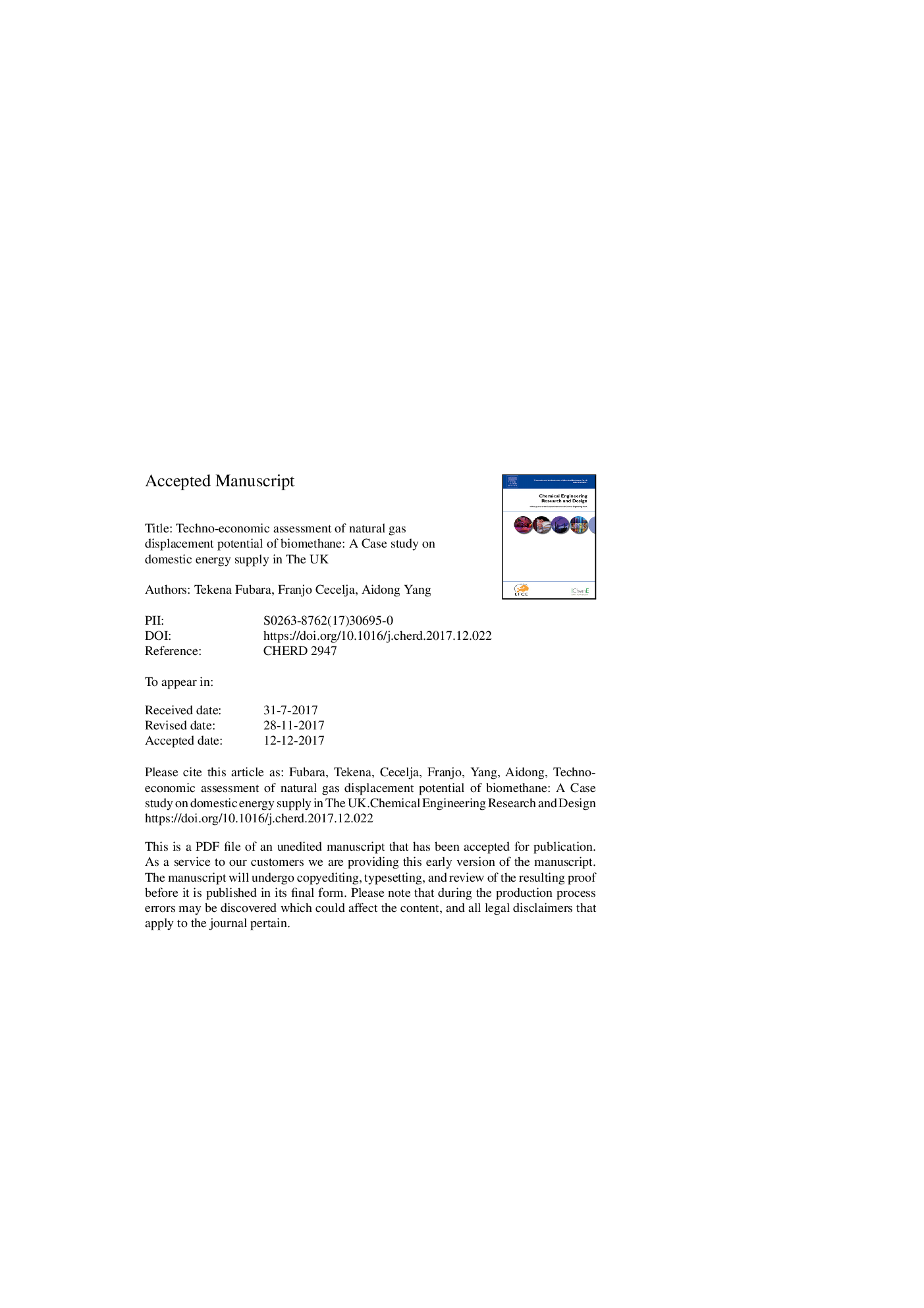| Article ID | Journal | Published Year | Pages | File Type |
|---|---|---|---|---|
| 7006019 | Chemical Engineering Research and Design | 2018 | 54 Pages |
Abstract
Mathematical modelling and optimisation at both household and energy supply network levels were developed to study the transformation of the natural gas-based domestic energy supply system with the introduction of biomethane generation, processing and utilisation based on a range of feedstock and conversion technologies. Biomethane processing includes, among other options considered, the conceptual development of a novel approach for upgrading biogas which utilises existing onshore natural gas processing capacity. Four different objective functions were considered for optimisation, representing different economic and environmental propositions, to identify the best path for introducing biomethane with multiple types of feedstock. Applying these objective functions to UK's domestic energy supply, and assuming a range of subsidies available, it was established that a technically significant displacement of natural gas could be achieved, with displacement capabilities of 48%-72%, and greenhouse gas (GHG) reductions between 64% and 80%. Economically, these ranges of achievement would correspond to various levels of capital investment and economic viability, depending on the objective functions. Those cases leading to a positive net present value (NPV) appeared to heavily rely on subsidies and could run into a significant loss if subsidies were removed in the operational phase. In contrast, optimisation not assuming any subsidies in the first place could lead to a fundamentally economically viable system, but at the cost of a significantly lower level of biomethane penetration compared to the cases assuming subsidies. Overall, the results have indicated the importance of carefully selecting optimisation objectives, and revealed the potential consequences of adopting financial subsidies in developing the biomethane infrastructure.
Related Topics
Physical Sciences and Engineering
Chemical Engineering
Filtration and Separation
Authors
Tekena Fubara, Franjo Cecelja, Aidong Yang,
